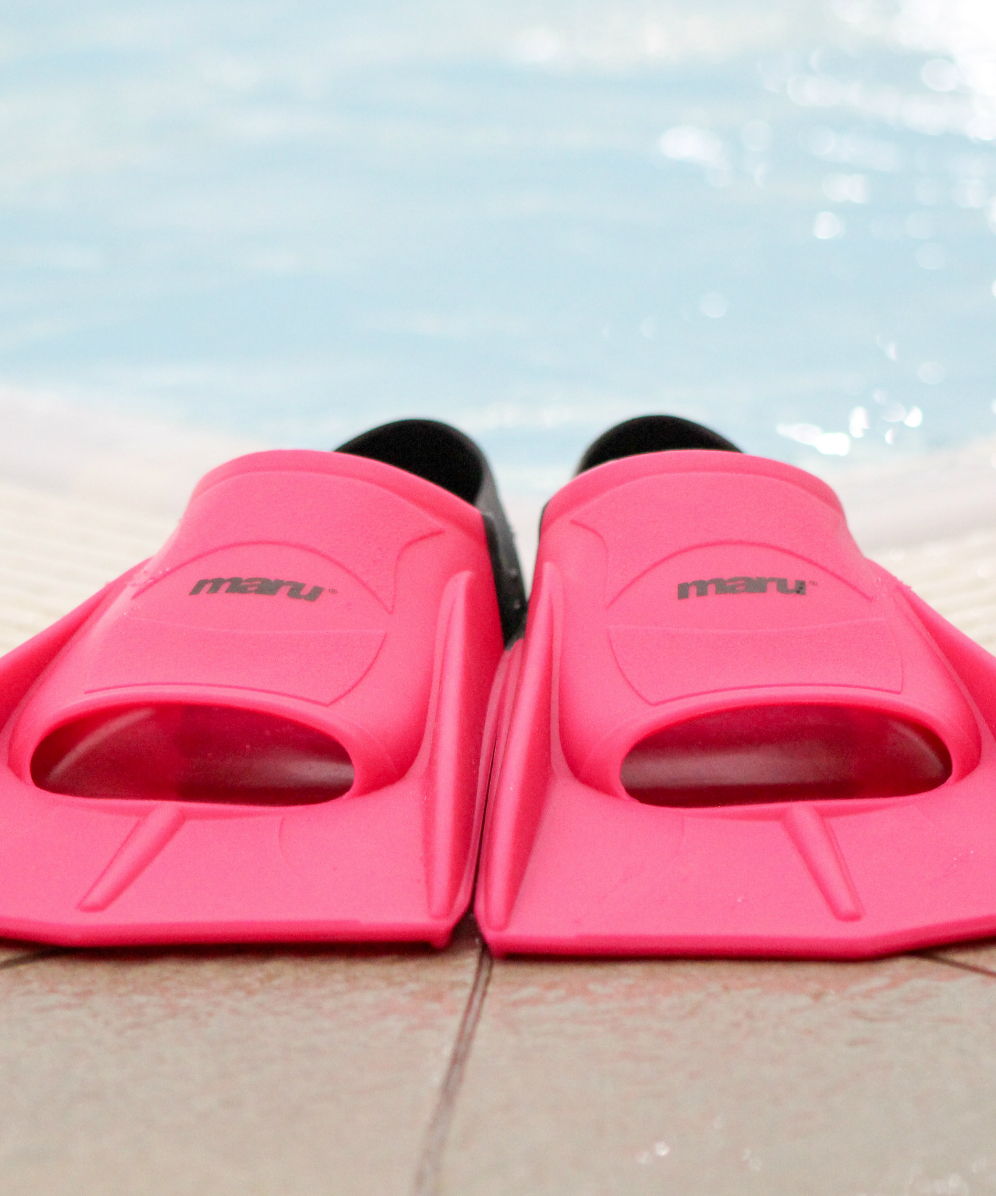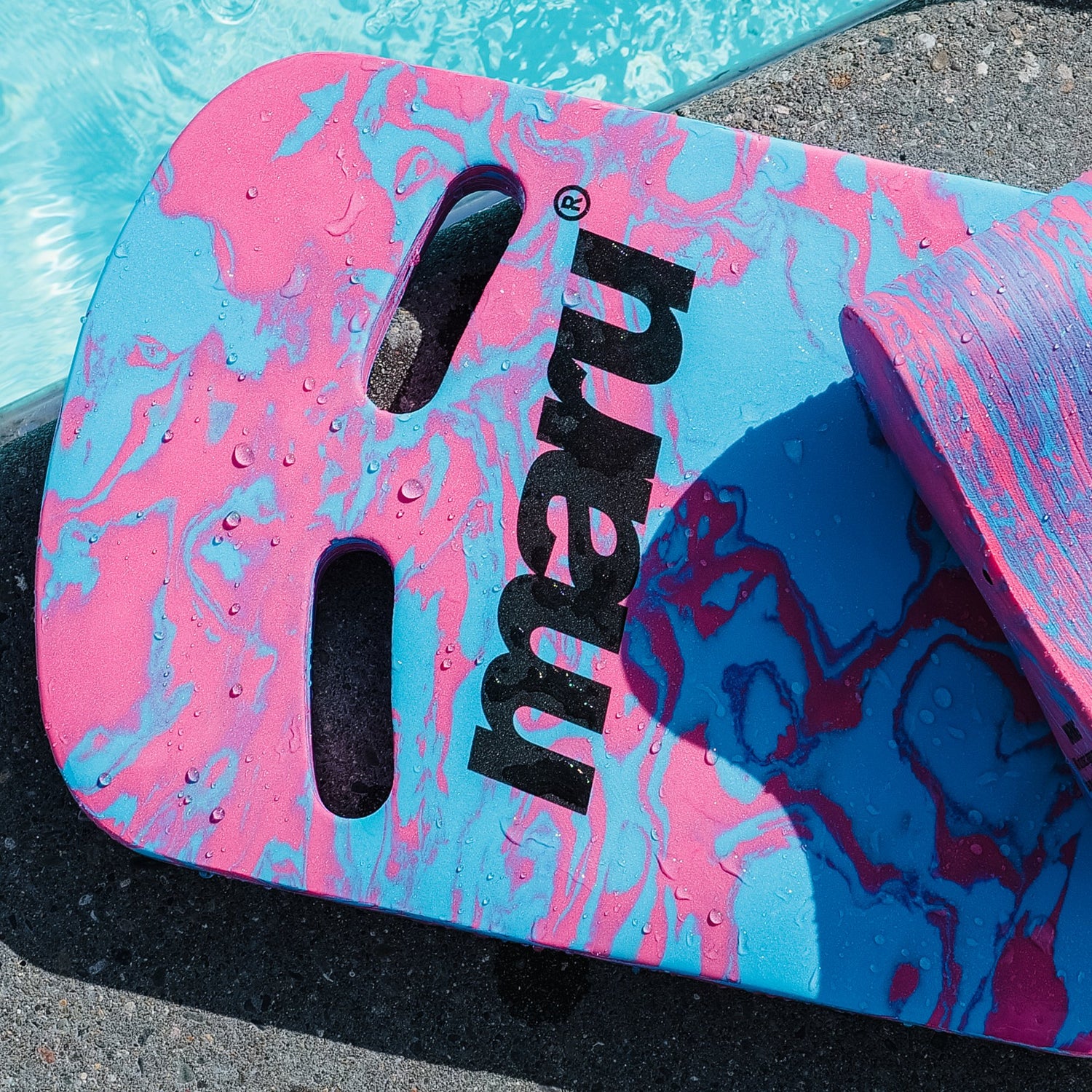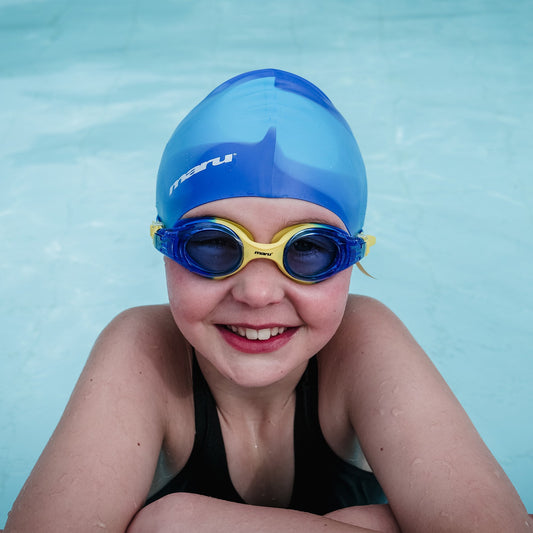If you're new to swimming or helping someone learn, you might wonder: what are the real essentials? The good news is that every swimmer, from complete beginners to Olympic athletes, relies on the same six fundamental skills. Master these, and you'll have the foundation for every stroke you'll ever swim.
I'm Ellie Morgan, and I've been coaching adult beginners for over six years. In that time, I've seen hundreds of nervous first-timers transform into confident swimmers. The secret? Breaking swimming down into these six core skills and practising them one at a time.
At Maru, we believe swimming should be colourful, fun, and accessible to everyone. Whether you're taking your first nervous steps into the shallow end or working toward your first full length, these essential swimming skills will get you there.
The 6 Essential Swimming Skills Every Beginner Needs
- Breathing Control - Learning to exhale underwater and inhale rhythmically
- Floating & Body Position - Maintaining horizontal alignment in the water
- Kicking Technique - Generating propulsion from relaxed, continuous leg movement
- Arm Strokes - Creating forward motion with smooth, alternating pulls
- Coordinating Arms, Legs & Breathing - Bringing all the elements together
- Water Safety & Confidence - Feeling comfortable and aware in aquatic environments
Now let's explore each skill in detail.
1. Breathing Control: The Most Important Swimming Skill
Here's what surprises most beginners: breathing is typically the hardest part of learning to swim. It's also the most important.
On land, breathing happens automatically. In water, you need to consciously exhale underwater through your nose or mouth, then turn your head to inhale at just the right moment. This feels completely unnatural at first, and that's perfectly normal.
What I teach my beginners:
The key is to stay relaxed. Many new swimmers hold their breath underwater, which creates tension throughout the body and makes you tired quickly. Instead, practice blowing bubbles continuously while your face is submerged. Think of it as humming or gently breathing out the entire time you're underwater.
When you need to inhale, rotate your head to the side rather than lifting it up. Your ear should stay in the water, with just your mouth breaking the surface. Take a quick breath, then return your face to the water and continue exhaling.
Why this matters: In my coaching experience, swimmers who master breathing control improve dramatically across all other skills. Once you're comfortable with the breath cycle, everything else becomes easier because you're no longer fighting panic or tension.
Coaching tip: A good pair of goggles helps enormously here. When beginners can see clearly underwater and don't worry about water in their eyes, they naturally relax their head position, which makes breathing coordination much smoother.
2. How to Float: Body Position Basics for Beginners
Before you can swim efficiently, you need to understand how your body naturally behaves in water. Floating teaches you this fundamental lesson.
The two essential floats:
Front float: Push off from the wall or step, extend your arms forward, and let your body become horizontal. Your face will be in the water (this is where breathing control helps). Relax completely, tension makes you sink.
Back float: Lie on your back with arms extended above your head or by your sides. Look up at the ceiling, let your hips rise, and trust the water to support you.
Floating builds water confidence because it proves that water will hold you up when you relax. It's also the foundation of good body position for every swimming stroke.
What good body position looks like:
Your body should be as horizontal as possible, like a plank floating on the surface. Beginners often swim with their hips and legs hanging down, which creates enormous resistance. Think about keeping your belly button pointing toward the bottom of the pool, this helps your hips stay high.
Why this matters: Swimming upright is exhausting. Swimming horizontally is efficient and sustainable.
Coaching tip: A swim cap reduces drag and helps beginners feel sleeker and smoother in the water. That psychological boost often translates to better body position because you feel more streamlined.
3. Basic Kicking Technique for Swimming
Your legs provide stability and propulsion, but only if you kick properly. The good news is that effective kicking is about rhythm and relaxation, not power.
What proper kicking looks like:
Your kicks should be gentle and continuous, coming from the hips rather than the knees. Imagine your legs are long and loose, like seaweed swaying in the current. Your feet should be pointed (not flexed), and your ankles should be relaxed and floppy.
Common mistakes I see:
Beginners often kick from the knees with bent legs, creating a cycling or running motion. This generates very little propulsion and lots of splashing. Others kick too hard and too fast, which exhausts them within seconds.
Instead, focus on small, quick kicks with straight legs. The movement originates at your hip, travels through your thigh, and finishes with a gentle flick from your knee and ankle. Your legs should stay mostly underwater, big splashy kicks waste energy.
Why this matters: Kicking doesn't just move you forward. It also keeps your body horizontal and stable, which makes breathing and arm strokes much easier.
Coaching tip: Kickboards are brilliant for isolating your legs and building confidence with kicking alone. Neither is essential, but both can accelerate your progress.
4. Swimming Arm Strokes: Front Crawl for Beginners
Once you're comfortable with breathing, floating, and kicking, it's time to add arm movement. For beginners, I recommend starting with basic front crawl arms because the alternating pattern is intuitive.
The basics of front crawl arms:
One arm extends forward while the other pulls through the water beneath your body. As one arm finishes its pull by your hip, it recovers over the water while the other arm begins its pull. This creates a continuous, alternating rhythm.
What I teach beginners:
Focus on long, smooth strokes rather than short, fast ones. Reach forward as far as comfortable, catch the water with your hand, and pull it back past your hip. Think about quality over quantity, each stroke should feel deliberate and controlled.
Your hand should enter the water fingertips first, roughly in line with your shoulder. Pull with your whole arm, not just your hand. Imagine you're pulling yourself forward along a rope.
Common mistake: Beginners often rush their arm strokes, thinking speed equals propulsion. In reality, smooth rhythm beats frantic splashing every time. Slow down, focus on the full range of motion, and let each stroke do its job.
Why this matters: Efficient arm strokes generate most of your forward movement in swimming. Get these right, and you'll cover significant distance with surprisingly little effort.
5. Swimming Coordination: Putting It All Together
This is where everything comes together and where beginners often feel overwhelmed. Don't worry. Coordination is the final skill most people develop, and it takes time.
What you're trying to achieve:
Your breathing should sync with your arm strokes. Typically, you breathe when one arm is extended forward and the other is recovering over the water. Your kicks continue steadily throughout, providing a constant rhythm that supports your arm strokes and breathing.
Why this feels complicated:
You're asking your brain to manage three different movement patterns simultaneously while also monitoring your body position and staying relaxed. That's genuinely difficult, especially when you're still thinking consciously about each element.
How I help beginners build coordination:
Start by combining just two elements. Practice arms and breathing together without worrying about your legs. Once that feels comfortable, add the kick. Or practice kicking and breathing while holding a float, then add arms later.
Break it into tiny pieces, master each combination, then gradually bring everything together. Some swimmers need weeks to feel coordinated. Others need months. Both timelines are completely normal.
Why this matters: Coordination is what transforms separate skills into actual swimming. It's the difference between struggling through a length and gliding smoothly from one end to the other.
6. Water Safety and Swimming Confidence
The final essential skill isn't about technique, it's about feeling comfortable and safe in aquatic environments.
What water confidence includes:
Awareness of your surroundings: Knowing where you are in the pool, where the edges are, how deep the water is, and who's around you.
Comfort with submersion: Being able to put your face underwater without panic, including brief full submersion if you go under accidentally.
Safe entry and exit: Getting in and out of the pool safely, whether that's using steps, a ladder, or the pool edge.
Recovery skills: Knowing how to roll onto your back to rest, or stand up if you're in shallow water and need a break.
Basic pool safety: Understanding pool rules, respecting lane etiquette, and knowing when to ask for help.
Why this matters: Confident swimmers are safe swimmers. When you trust yourself in water, you can focus on improving technique rather than managing fear or anxiety.
Coaching tip: If sensory issues make swimming uncomfortable, water in your ears or up your nose, don't tough it out. Earplugs or nose clips can help beginners who feel discomfort with water exposure. Comfort leads to confidence, and confidence leads to progress.
Tips for Learning Essential Swimming Skills
After six years of coaching adult beginners, here's what I wish everyone knew:
Practice one skill at a time. Don't try to perfect everything simultaneously. Spend entire sessions just working on breathing, or just floating, or just kicks. Mastery comes from focused repetition.
Short, frequent sessions beat long, infrequent ones. Twenty minutes twice a week is better than an exhausting hour once a week. Your brain and body need regular exposure to build muscle memory.
Take breaks and stay patient. Swimming is genuinely challenging to learn as an adult. Your progress won't be linear, some sessions will feel brilliant, others frustrating. That's normal. Rest when you need to.
Celebrate small wins. Did you manage three continuous breaths today when you could only manage one last week? That's huge progress. Acknowledge every improvement, no matter how small it seems.
Use accessories as confidence boosters. Goggles, caps, fins, kickboards, pull buoys, these aren't crutches. They're tools that help you experience what good technique feels like. Maru's range of colourful, reliable accessories can support your journey and make training more enjoyable.
Conclusion
These six essential swimming skills form the foundation of every stroke you'll ever learn. Whether you progress to butterfly, breaststroke, backstroke, or stay with front crawl, these fundamentals remain constant.
The wonderful thing about swimming is that it rewards patience and consistency. You don't need to be naturally athletic or young or fearless. You just need to show up, practice these basics, and trust the process.
Start simple. Master one skill before moving to the next. Enjoy the small victories along the way. Before you know it, you'll be swimming confidently from one end of the pool to the other.
About the Author
Ellie Morgan is a qualified swim coach and former competitive swimmer with more than a decade of experience teaching adult beginners. As a content contributor for Maru, she specialises in breaking down swim skills into simple, confidence-boosting steps for every level.











